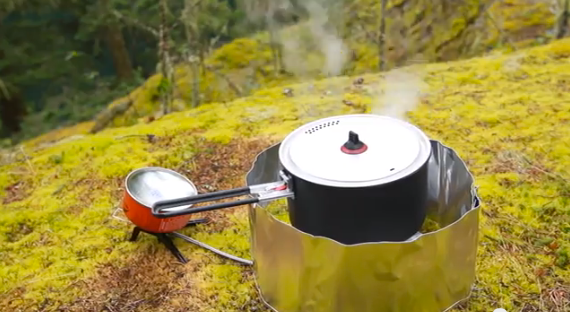
Purchasing a new stove can be a confusing process. There is a wide range of information on the web, and most manufacturers include a lot of different test numbers. It isn’t always clear what these numbers mean or how they’ll impact real-world performance. In this article I explain which numbers you need to know and which you don’t.
By MSR VP Product Development & Marketing Drew Keegan. All photos courtesy of MSR.
Water Boiled
Water boiled per ounce of fuel is like the MPG rating for a car. This number gives you a stove’s efficiency in real terms that matter in the field. If you’re a thru-hiker and fuel efficiency is your highest priority, you want a stove that produces high numbers here.
Water boiled per 20 oz. (600ml) of fuel is similar to the distance a car will travel on one tank of gas. This tells you how much output you can expect from a typical volume of fuel. We provide these numbers for canister fuel as well. When you look at this number, think about how much fuel you usually take on a trip and how much of it you use.
Boil Time
Boil time is like a 0-60mph time for a car. This number tells you how fast a stove can bring water to a boil in average (laboratory) conditions. It’s also a good indicator of a stove’s ability to melt snow. If you’re a mountaineer, or find that you’re always in a hurry to eat, look for a stove with a fast boil time.
BTUs / Watts
BTUs and Watts are a common performance measurement for stoves, and these ratings are required by regulatory agencies, but they’re not what they seem. A high BTU rating only proves one thing: the stove uses a lot of fuel. Although these numbers appear to be a measurement of the heat a stove produces, they’re actually just an input rating – a measure of how much fuel is consumed. The output is dependent on a number of other factors, including burner design, jet size and efficiency. Like that old clunker in your neighbor’s driveway, a stove with high BTUs can be very slow and inefficient.
Test Conditions
Your mileage will vary. Most manufacturers test their stoves in laboratory conditions. According to the nearly universal standard, tests are performed at sea level with an ambient temperature of 70F (21C) and no wind. Boil tests start with water that is room temperature and end with a boil at 212F (100C).
When you’re in the field, water and air are often colder, there is usually some wind and you may be at a much higher altitude. Depending on the stove, these real-world differences can make a big dent in performance. We test every stove at altitude and provide performance data for some of them (see the Reactor) in a number of wind scenarios.
When it comes to measuring stove performance, we’ve found that the best measures are boil time and water boiled. These numbers give useful information that can be compared across stoves, but to get the complete picture you’ll need to look at both. A faster boil used to mean less efficiency, but that’s no longer the case. Stove design, pot support height, enclosure design, windscreen usage, and other design factors can influence these numbers significantly. While a stove with good efficiency but slow boil times might be acceptable, it’s best to have both measurements so you can understand the total performance.
 Karen Kirsch
Karen Kirsch